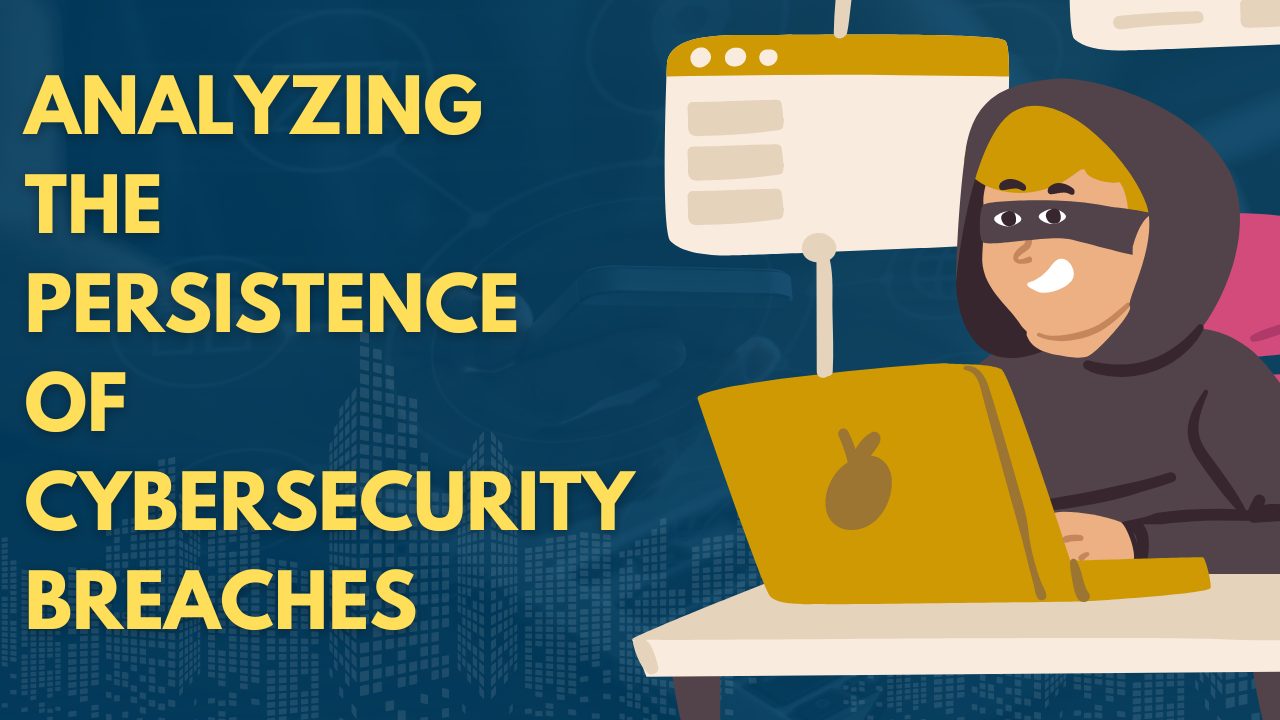Analyzing the Persistence of Cybersecurity Breaches
We observe that despite pouring billions into cybersecurity defenses, the incidence of digital intrusions has not diminished. This signals a concerning trend of ineffective security measures against increasingly sophisticated cyberattacks.
- The rise in investment is evident, with spending reaching $188 billion last year and projected to grow to nearly $215 billion. This underscores our commitment to combating cyber threats.
- Advanced tactics employed by attackers accentuate the complexity of the modern cybersecurity battlefield. For example, attackers have transitioned from isolated ransomware attacks to establishing ransomware enterprises that further disseminate their services.
- Vulnerabilities attributed to the shift towards cloud-based systems and the scarcity of skilled cybersecurity personnel present significant challenges in safeguarding sensitive online information.
- Dependencies on third-party vendors with potentially obsolete systems amplify our security risks, creating multiple avenues for cybercriminals to exploit.
Our resolve is clear: to fortify our digital defenses with a multi-layered security strategy and ensure consistent data backups to mitigate the dangers posed by cyber threats.
Heightened Investment in Cybersecurity Measures
Projected Growth in Cybersecurity Funding
We predict a notable increase in investment toward cybersecurity, with last year’s budget of $188 billion expected to climb to nearly $215 billion this year. This growth reflects our heightened priority to strengthen our cyber defensive capabilities.
Increasing Security Breaches Despite Higher Investment
Despite our increased investment in cyber defenses, we’ve observed a troubling rise in security breaches. Last year witnessed a staggering 78% increase in incidents, totaling over 3,250 breaches. This highlights the importance of evolving our strategies to counteract the sophistication of these cyber threats.
Complexity of Cyber Attacks
- Transition from basic malware to complex ransomware syndicates
- Even amateurs can now launch damaging attacks with ease due to these advanced tools
Challenges with Cloud Security
- Data migration to cloud services:
- Need for superior technical oversight
- Risks of inadequate security configurations
Risks from Third-party Vendors
- Vulnerabilities due to outdated technology:
- The use of legacy systems, like XP machines, increases exposure to attacks
We recognize the need for strategic alignment between investment and effective cybersecurity measures. Modern defenses now include DNS protection, zero-trust architecture, proactive detection and response, and advanced email security for cloud environments.
We are committed to providing expert advice and solutions to ensure the robustness of your network security. We focus on the precise configuration of security layers, aiming for comprehensive network protection.

Factors Contributing to the Rise in Security Incidents
Increasing Sophistication of Cyberattacks
We are witnessing a transformation in the landscape of cyber threats. Cybercriminal groups are adopting more sophisticated strategies, refining their techniques to evade detection. These collectives have started to distribute ransomware as a service, reducing the need for technical expertise among attackers. This trend has resulted in a surge of cyberattacks, making it challenging for organizations to keep up with evolving security demands.
Evolution of Extortion Software and Data Leaks
Ransomware no longer merely locks data; it now includes tactics to extract and threaten the release of sensitive information. We observe this advancement as a dual threat where attackers demand ransom to unlock encrypted networks and threaten to disclose confidential data. The leaking of private information serves as a tactic to intensify pressure on the affected parties, exacerbating the impact of attacks.
Rapid Transition to Cloud Without Adequate Safeguards
Our collective move to the cloud has been swift, spurred by the need for digital transformation. This brisk migration has often occurred without implementing sufficient security protocols due to a shortage of skilled cybersecurity professionals. Although cloud infrastructures are inherently secure, the absence of tailored security measures exposes data to potential breaches, making it as vulnerable as it would be in a less secure traditional environment.
Risks Related to Third-Party Equipment
Vulnerabilities in External Hardware
- Outdated Technology: Our facilities can face risks from legacy hardware, such as old heating, ventilation, and air conditioning (HVAC) systems, which may compromise our cyber defenses. Utilizing deprecated systems for critical controls, like the ones governing physical access, increases the potential for security breaches.
Issue Implications Older Hardware Higher risk of cybersecurity incidents Overlooked Maintenance Unrepaired weak points due to absent updates
Shortcomings of Obsolete Systems
- Unsupported Platforms: Operating on platforms without vendor support can expose us to substantial security vulnerabilities. These outdated systems are not equipped to ward off newly developed cyber threats, offering gateways for breaches.
Compromised Element Consequences Antiquated Safeguards Exposed to current and emerging dangers Update Deficiency Known security flaws remain accessible - Transition Security: Transitioning to cloud-based solutions offers tangible physical security advantages. However, forgetting to enforce stringent cyber protections like advanced firewalls and encryption protocols can make our cloud-stored data as vulnerable as in our local networks. We are dedicated to ensuring security checks are complete before and during any transfer of assets to cloud services.
Strengthening Defense Mechanisms
Directing Investment Towards Efficient Defenses
In an era where the allocation of funds towards cybersecurity is on the rise, forecasting an increase to $215 billion, it’s our responsibility to direct these finances smartly. The aim is to prioritize spending on security measures that offer the strongest protection and the best value. This discerning approach to channeling funds underpins our commitment to enhancing the security infrastructure.
Expenditure Highlights:
- 2023 Spending: $188 billion
- 2024 Projected: $215 billion
Prioritization Criteria:
- Return on investment from security measures
- Impact and effectiveness of the defensive solutions
Maximizing Security Tool Effectiveness
Deploying top-tier tools is crucial, but proper configuration and management are what close the security loop. We recognize that robust security protocols, like setting up formidable firewall configurations and regular cloud security assessments, are necessary to seal off vulnerabilities, especially when shifting data to cloud environments.
Security Actions:
- Configure and maintain strong firewalls
- Implement and update security measures
- Regular cloud security checks
Awareness of potential third-party vendor risks propels us to supervise and manage vendor-related vulnerabilities decisively. Retiring outdated equipment and staying abreast of the latest operating systems are vital in mitigating security risks.
Vendor Management Strategies:
- Audit: Review network and data center devices
- Upgrade: Update or replace legacy systems
- Collaborate: Work closely with vendors to enhance their security
We ensure that our defense strategies, such as DNS protection, antivirus software, and zero-trust models, are applied with precision and are under continual reassessment to maintain optimal efficacy. At Colorado Computer Support, we’re dedicated to assisting with harmonizing security investments with their protective outcomes.
Enhancing Your Digital Defense
In today’s digital age, safeguarding our online ecosystem is becoming increasingly vital. We recognize the heightened level of threat presented by sophisticated cyber-attacks. These can be complex ransomware schemes and strategies targeting private and corporate information.
As these perpetrators often leverage ransom demands by threatening to leak stolen data, we’ve adapted our cybersecurity strategies to address these evolving threats. As organizations move services to the cloud, solidifying their defenses is paramount to withstand potential intrusions. It’s also important to consider the risks associated with third-party associates, particularly when their networks may incorporate obsolete technology.
Embracing a multi-layered defense is key, translating strategic investments into fortified security at every level. Our improved cybersecurity toolkit includes:
- DNS Safeguards: We set up blocks against hazardous or questionable websites to counteract phishing and similar dangers.
- No-Trust Verification: We rigorously authenticate identities to block illicit access attempts.
- Proactive Threat Management: We perform continuous oversight with swift action against emerging threats.
- Secured Email Solutions: We protect email infrastructures against infiltrative malware and spam.
Our firm offers professional advice and comprehensive management of these security measures designed to amplify your cyber resilience. We ensure your cybersecurity investments are both wise and impactful.
We invite organizations seeking customized security approaches to engage with our expertise. We’re committed to enhancing your network’s defenses and bolstering your data backup systems. Connect with our specialists through our website or by calling us, and let us help you protect your digital landscape.

 55 Park Road,
55 Park Road, 




